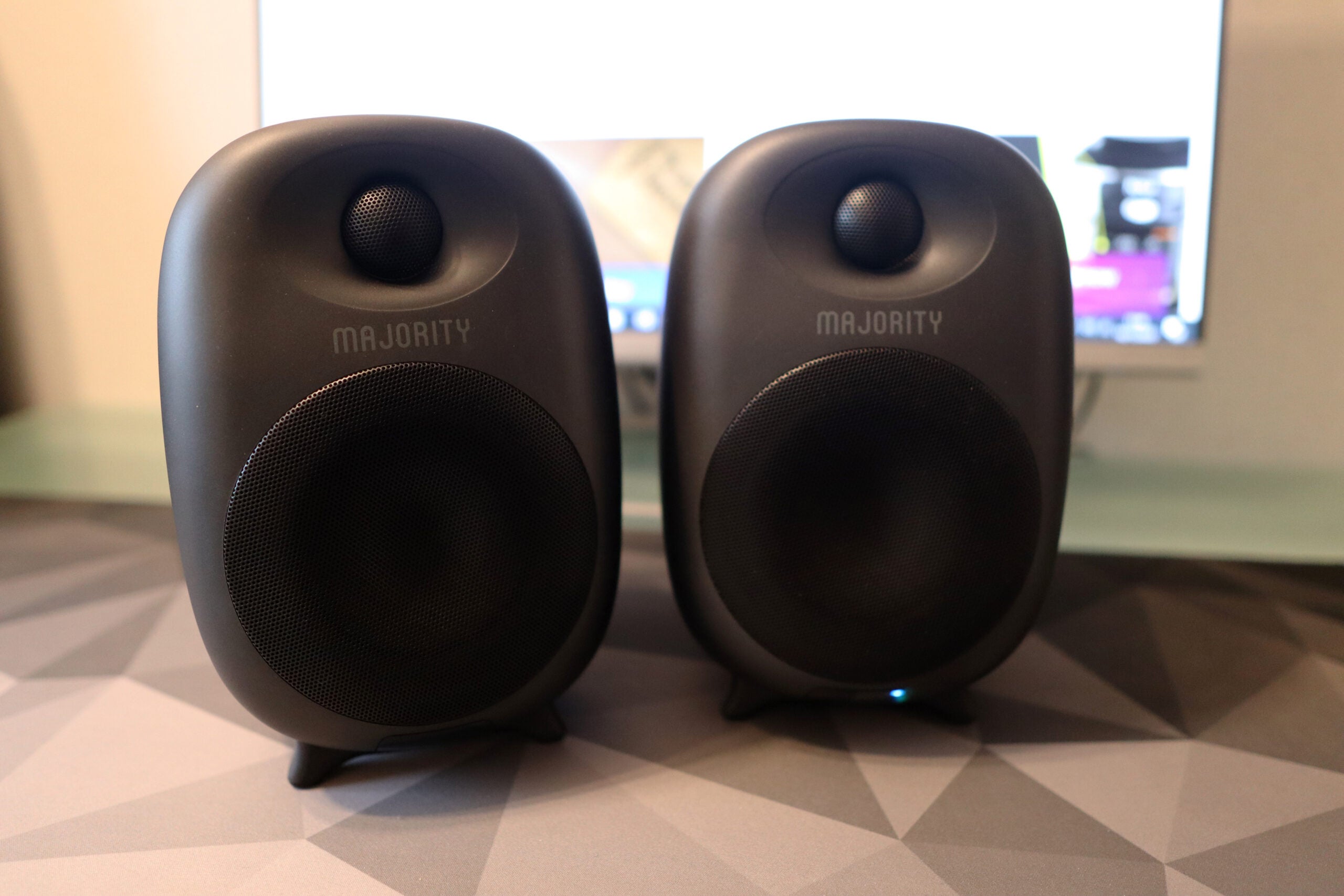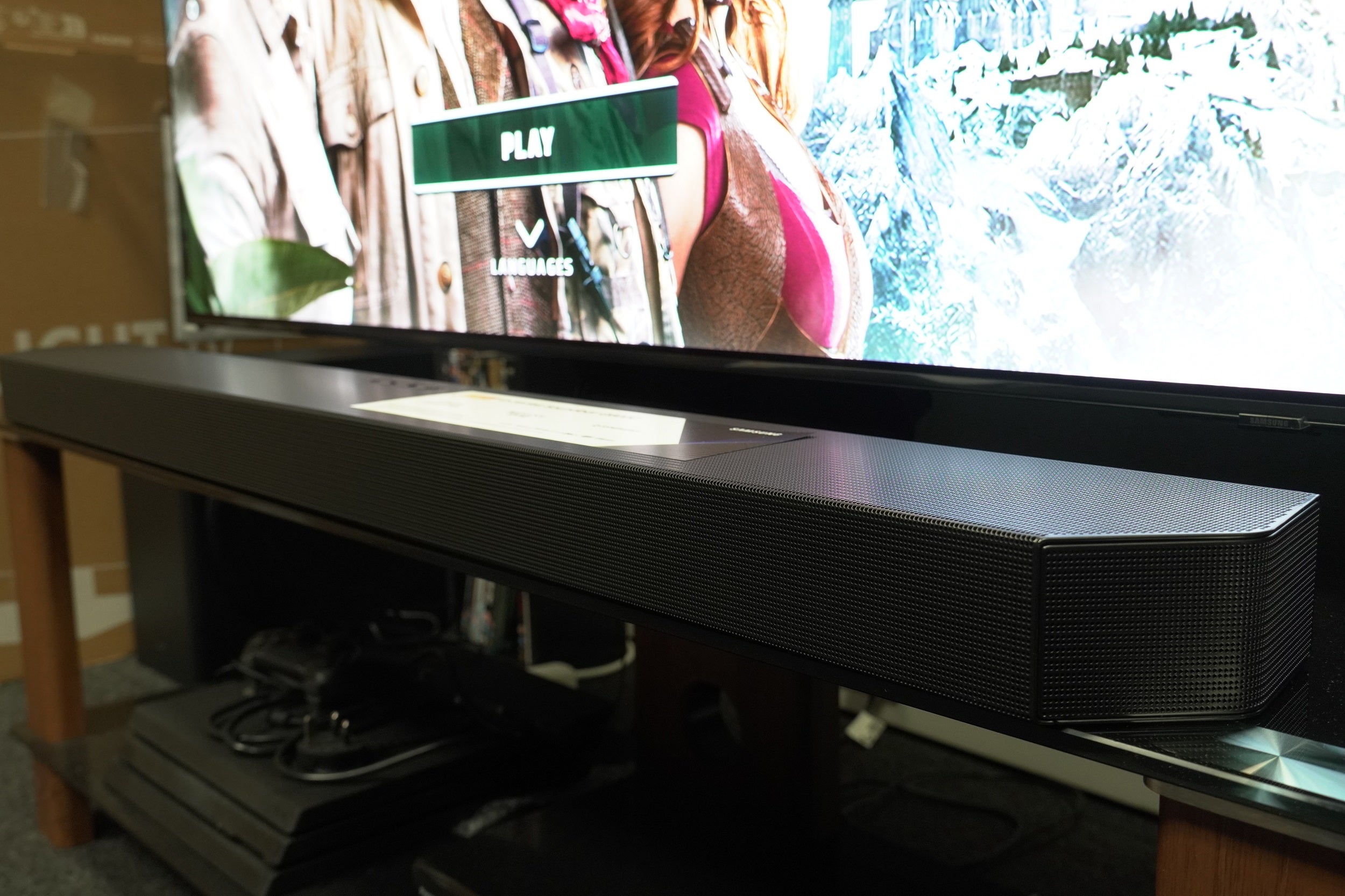Bang and Olufsen Beolab 8 Review
More of that Bang & Olufsen thing that Bang & Olufsen does so well…





Verdict
A delightful object, sure, and a very accomplished speaker in many respects too. If the price doesn’t make you swallow hard, though, then many congratulations on your lottery win…
Pros
- Energetic, detailed and uncomplicatedly hefty sound
- The best control app around
- Premium materials, impeccable build quality and alluring looks
Cons
- Can sound a little two-dimensional at big volumes
- No voice control
- Expensive
Key Features
- ConnectivityBluetooth 5.3; dual-band Wi-Fi; 2 x Ethernet; USB-C
- Streaming servicesApple AirPlay; B&O Radio; Chromecast; Deezer; Spotify Connect; TIDAL Connect
- Power300W of power at its disposal
Introduction
Bang & Olufsen is one of those companies that doesn’t even require an introduction about how it needs no introduction.
The company’s modus operandi – deeply competitive audio quality combined with a unique approach to design and materials – was established several decades ago and given that it’s not broken it’s demonstrably not in need of fixing.
Beolab is the most upmarket, most premium and, consequently, most expensive of the Bang & Olufsen ranges – and this Beolab 8 is the latest addition. In terms of both design and asking price, it’s Bang & Olufsen business as usual – but can it possibly hope to justify the cost in purely sonic terms?
Availability
The Bang & Olufsen Beolab 8 is on sale in the United Kingdom for at least £2199. In America it starts at $2749, and in Australia it’s a minimum of AU$4499. For the avoidance of doubt, that’s how it costs for a single speaker in the least showy of the available finishes, accompanied by the least expensive of its stand options.
It’s an expensive wireless speaker – so expensive, in fact, that there’s not an awful lot of price-comparable competition around. Devialet is about the only other brand prepared to look you in the eye and charge this sort of money for a product that is, in the final analysis, just a wireless speaker.
Design
- Compact dimensions
- 4.1kg (without stand)
- Three stand options
It may not be obvious from the pictures, but at 290 x 189 x 165mm (HxWxD) the Beolab 8 is a speaker of unremarkable size – but to give the company its due, Bang & Olufsen has had a proper go at making it look and feel like the premium product the asking price suggests it is.
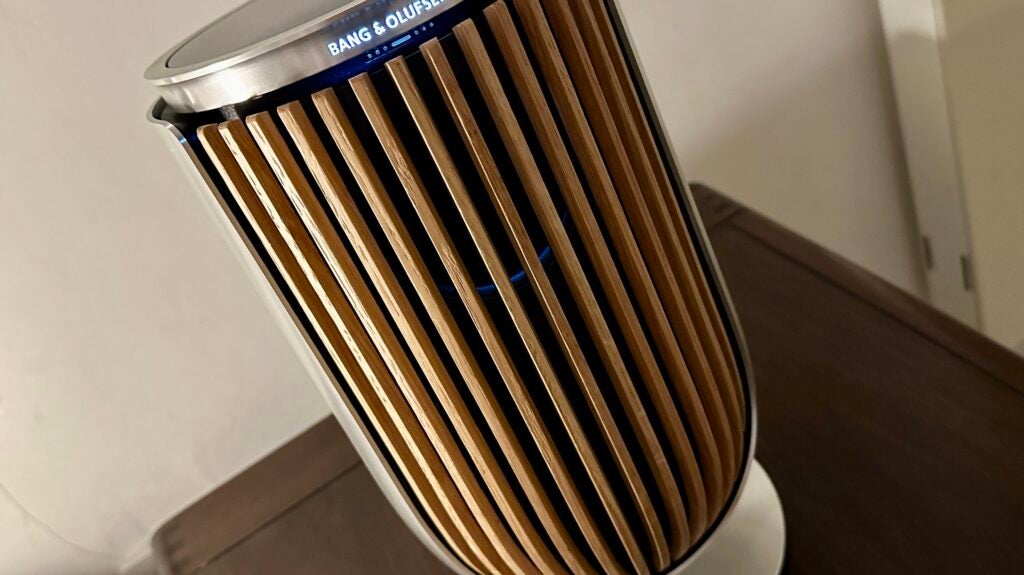
The £2199 price quoted earlier buys a Beolab 8 in natural aluminium with a grey mélange grille, sitting on a table-stand. My review sample features the slatted oak grille that’s a trademark of the Beolab range – this option brings the price up to £2699.
And that’s also how much you’ll pay for gold tone with light oak or black anthracite with dark oak. If you want a wall- or ceiling-bracket rather than the table stand, add another £100 to the price. If you need a floor stand, that’s another £200.
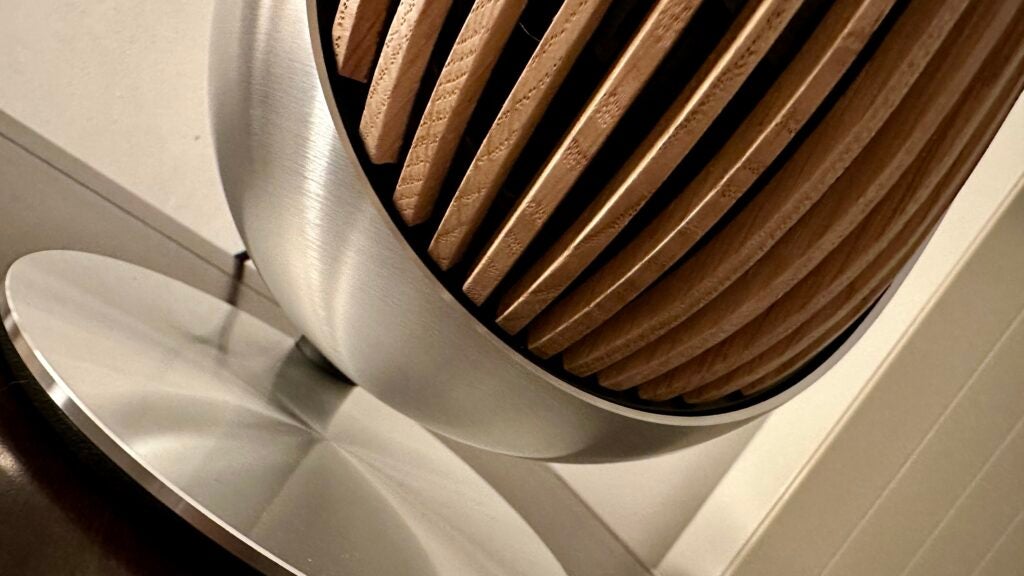
At the risk of repeating myself, I’m going to repeat myself: the Beolab 8 does not seem to be an option for the value for money shoppers among us.
Features
- 300 watts of Class D power
- 24-bit/192kHz DAC
- Numerous connectivity options
Bang & Olufsen, lest we forget, is no ‘all fur coat and no knickers’ enterprise. Yes, the Beolab 8 is a pricey product, but there are no obvious gaps in its specification.
Connectivity options, for instance, are plentiful. Dual-band Wi-Fi, along with SBC- and AAC-compatible Bluetooth 5.3, take care of wireless business, and the control app (which I’ll mention more fully later) offers Apple AirPlay 2, Chromecast, and the ‘Connect’ versions of Spotify and TIDAL.
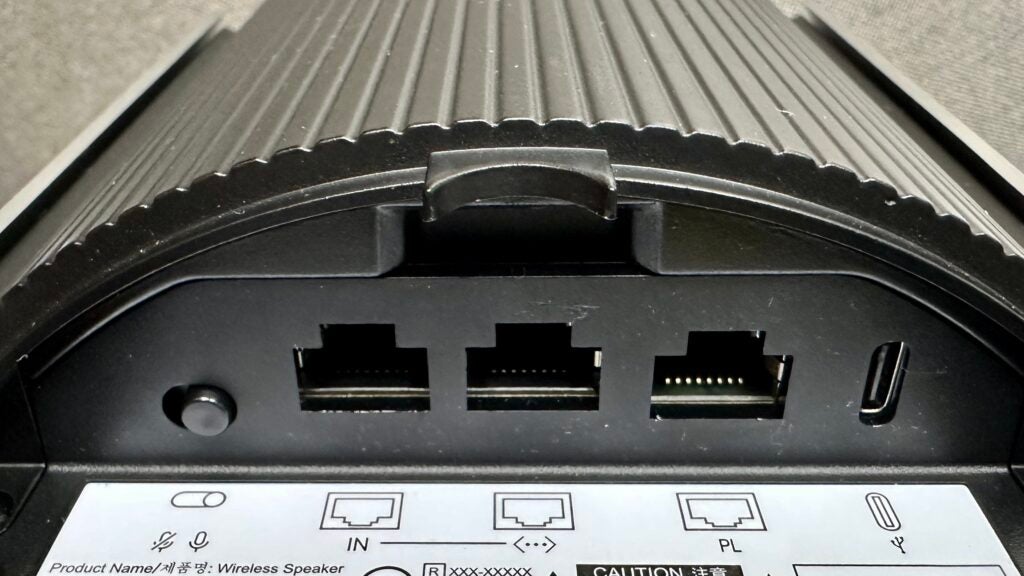
The app also gives access to Bang & Olufsen Radio, which makes a massive number of broadcasts from all over the world available too. There’s DLNA compatibility, so your local network-attached storage can be accessed. Wired connectivity, meanwhile, is handled by a couple of Ethernet sockets and a USB-C input – they’re at the rear of the cabinet and are a bit of a pain to get at.
No matter how you get it on board, though, your digital audio content is fettled by a 24-bit/192kHz DAC chipset – and it doesn’t really matter the file type you prefer. Once decoded, audio is served via a 133mm bass driver (driven by 200 watts of Class D power), 76mm midrange driver and 15mm soft-dome tweeter (which get 50 watts each).

Don’t listen to any music before the Beolab 8 has had a chance to optimise itself to its specific environment, though. Its advanced room compensation routine, available in the control app, takes next-to-no time to maximise the performance of the speaker.
Adaptive Bass Linearization does something similar, but with greater attention paid to latent problems in the lower frequencies. After that, you need to decide on which of the beam width control options (wide or narrow) are preferable – and then you’re up and running.
There’s a feature due in the next few months that applies if you’re wealthy enough to be running two Beolab 8 as a stereo pair. Fluid sweet spot wants to use the position of your smartphone to optimise the speakers’ stereo image, which sounds like a fairly mad idea.

The Beolab 8 is built around Bang & Olufsen’s Mozart platform, which gives it compatibility both forwards and backwards. The platform is adaptable and modular, so the Beolab 8 is designed to be easily upgradable to take advantage of any new technologies that are not currently available. And because Powerlink is part of the Mozart platform, the Beolab 8 is compatible with Bang & Olufsen audio and video products dating back all the way to the 1980s.
Free for iOS and Android, the Bang & Olufsen Music control app is one of the best around – it’s clear, logical, comprehensive, stable, and actually quite nice to use. EQ adjustment, for instance, is available via bass and treble sliders – but also via a target graphic. Playback control, establishing multi-room systems, accessing software updates, running the calibration routines, establishing presets… you name it, the app is on top of it.

There are also some controls in the speaker’s glass top-plate – illuminated capacitive touch controls, woken by a proximity sensor, handle play/pause, volume up/down, and skip forwards/backwards. You can also access your four presets and begin Bluetooth pairing from here, too.
About the only thing missing is voice-control. It’s not as if it isn’t easy or quick to get the Beolab 8 to do your bidding using the app or the physical controls – but I can’t help thinking my money (so much money) ought to buy as many user interface options as possible.
Sound Quality
- Expansive, robust, and detailed sound
- Significant low-frequency presence and control
- Can get a little strident at volume
There’s some calibration-related admin to be done before you’re ready to hear what the Beolab 8 is capable of. But it doesn’t take long, and anyway, it’s well worth the minor effort.
Given a 24-bit/96kHz file of Weyes Blood’s And in the Darkness, Hearts Aglow to deal with, there’s plenty to enjoy – admire, even – about the way the Bang & Olufsen goes about its business. The midrange is the star of this recording, and the Beolab 8 has no problem extracting all the attitude and character, as well as describing the extraordinary technique, in the vocal performances here.

It’s an articulate and revealing speaker, able to hand over even the finest, most transient details regarding a singer’s mindset and intentions. But it does so in a natural and engaging way, prioritising entertainment over analysis every time.
It can muster significant low-frequency presence, too. Its bass reproduction is deep, controlled, convincingly shaped, and absolutely loaded with detail – so even though momentum levels are high, you never feel like there’s any facet of the low end you’re missing out on. If it’s punch you want, there’s plenty of it here – but it’s accompanied by subtlety, finesse, and confident rhythmic expression.
The top end is a similar story where detail levels, control and eloquence are concerned, and the Beolab 8 has enough substance to its treble reproduction to balance out the bite and shine it invests these sounds with. Or, at least, it does if you’re not listening at antisocial volume levels. The more you crank it up, the more the tweeter seems to fancy its chances – so big volumes can lead to a skewing of the frequency response towards the top end, and a skewing of the otherwise-neutral tonality towards a hint of hardness and edginess.

You don’t have to listen all that loud to realise the Bang & Olufsen has plenty of dynamic headroom and can put a lot of distance between quiet and loud in an instant. It demonstrates an equally impressive understanding of harmonic and dynamic variations within a single instrument or voice, too.
There’s an overall sensation of directness and positivity to the way the Beolab 8 sounds, regardless of the attitude of the music it’s playing. Most of the time, this works just fine – it’s not as if the speaker is bug-eyed in its delivery, of course, but it most certainly knows how to attack a recording.
On occasion, though, its lively attitude bumps up against a recording that requires a gentler, less assertive touch – and the result is a compromise that doesn’t really suit either the speaker or the song.

Latest deals
Should you buy it?
You value impressive design and premium materials as much as impressive sound
Not for the first time and surely not for the last, here’s a Bang & Olufsen product that just couldn’t be the work of anyone else
You want to hear where all your money has gone
This is a great-sounding speaker – but this level of performance can be yours for quite a lot less money if you spend it elsewhere
Final Thoughts
Like the rest of us, I’m not made of money. And like the rest of us, I would prefer the Bang & Olufsen Beolab 8 to be a mediocre speaker so that I could point at the people who buy it and laugh. But while it doesn’t sound as expensive as it is, it sounds very, very good indeed – and so I have to keep my powder dry ready for next time…
How we test
We test every wireless speaker we review thoroughly over an extended period of time. We use industry standard tests to compare features properly. We’ll always tell you what we find. We never, ever, accept money to review a product.
Find out more about how we test in our ethics policy.
Tested for several days
Tested with real world use
FAQs
There are no voice assistants supported for the Beolab 8


